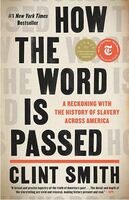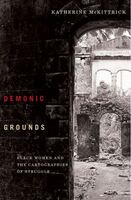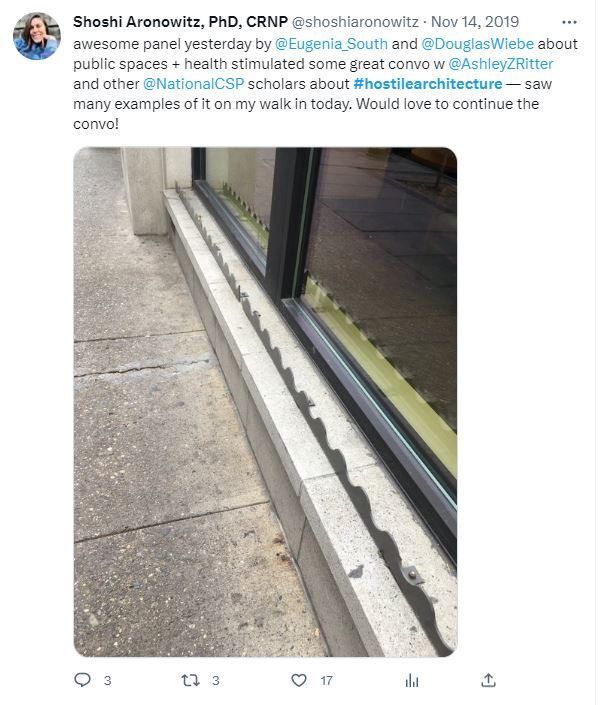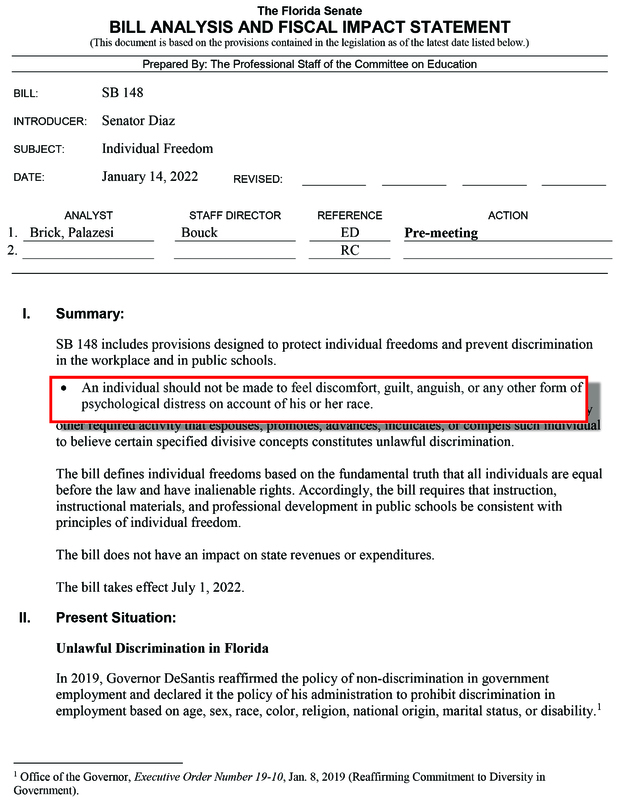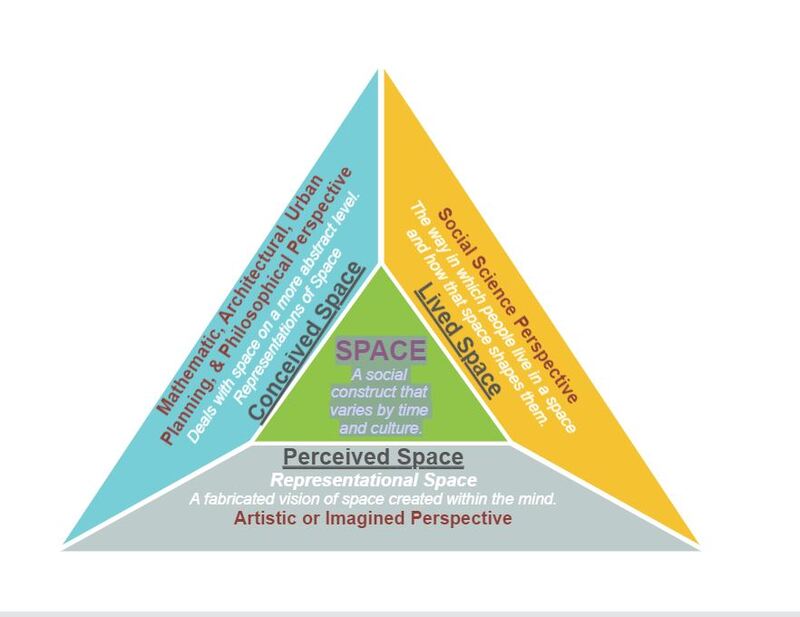Bridgett Town: How Hostile Nostalgia Obscured its Memory and how Henri Lefebvre's Production of Space Could Bring it Back
Hostile Nostalgia
In How the Word is Passed: a Reckoning with the History of Slavery Across America,1 Clint Smith relays that his Monticello tour guide, David Thorson, mused, “[H]istory is kind of about what you need to know... but nostalgia is what you want to hear.”2 In this simple phrase, he roughly echoed the argument made by Michel-Rolph Trouillot in Silencing the Past: Power and the Production of History,3 which examines the tension between a positivist view of history that focuses on the agreed-upon facts and the constructivist theory that acknowledges the overlay of what happened, what is said to have occurred, and how the archival “power to decide what is trivial-and annoying-is also part of the power to decide how ‘what happened’ becomes ‘that which is said to have happened.’”4 Nostalgia lives in the silences it actively creates, while doing history, particularly African American history, requires the interrogation of suppressed narratives, overlooked geographies, and discounted actors. Increased scrutiny of nostalgia regularly triggers a defensive response. This metamorphosis plays out when Smith challenges the Blanford Cemetary’s choice to exclude slavery from their narrative when presenting the history of The Ladies Memorial Association’s commission of fifteen windows commemorating the soldiers and states of the Confederacy. At first, he was told by his tour guide, “In most cases, we try and fall back on the beauty of the windows, the Tiffany glass kind of thing.”5 When Smith pressed the point further, the site manager redirected the conversation, stating, “[A]s a woman I like to talk about women’s history and say they’ve been through a lot, but this is how they helped to get through their grief of perhaps a husband, father, son dying… There was nothing done for the Confederates, so it was important to them. And this is what their result was, this beautiful chapel.”6 These deflections are more than just the avoidance of uncomfortable conversations with an insistent visitor; they are a direct attempt to reinforce the archival silences highlighted by Trouillot by emphasizing a warped positivist view that elevates nostalgia over historical dissection and, as McKittrick argues in Demonic Grounds,7 a static view of place that acts as a proxy for the dominant cultures keeping black geographies in or out of particular spaces.8 In combination, these diversions and structures create barriers to further investigation, making this interaction an example of Hostile Nostalgia.
In their British Journal of Sociology article, The Resentful Undergrowth of Nostalgia: Ontological Insecurity, Relative Deprivation and Powerlessness,9 Rogenhofer et al. note, “Nostalgia's quest for a ‘viable alternative to the acceleration of historical time’ harbours some emancipatory potential, yet its recollection of the past tends to be tainted by selective social amnesia—often favouring once dominant groups against their current competitors.”10 The dominant group, which in the United States is generally white, cis-gendered men, insists that the nostalgic view of the past is a positivist view only concerned with what happened, and since alternative narratives have been shut out through this process, they can be disregarded. There is an inconsistent dichotomy in this thinking that at once claims control over which history is given legitimacy while simultaneously claiming that there is only one version of that same history. Trouillot counters, “[T]o admit the possibility of this second narrative is, in turn, to admit that the historical process has some autonomy vis-a-vis the narrative. It is to admit that as ambiguous and contingent as it is, the boundary between what happened and that which is said to have happened is necessary.”11 I argue that the concept of Hostile Nostalgia reconciles the dominant culture’s contrarian views of the legitimacy or illegitimacy of certain historical narratives in that it acknowledges this schism and argues that one supports the other. Inquiry places nostalgia in a precarious position because it is open to destruction via new information. Therefore, to protect the dominant culture’s agreed-upon meaning of events, Hostile Nostalgia constructs obstacles between historical interrogation and the space of nostalgia.
The concept of constructing a built environment, albeit in the case of Hostile Nostalgia an intellectual environment, is derived from Hostile Architecture, “a term coined to describe the spikes and unusable benches designed to discourage loitering and other undesirable activities.”12 In 1960, criminologist C. Ray Jeffery and British architect Oscar Newman collaborated on constructing public spaces using elements that would deter criminal activity.13 Their motivation was an attempt to draw people who had fled to the perceived safety of the suburbs back into the cities. Although perhaps not directly acknowledged, the changes to public spaces that Hostile Architecture brings about are motivated by politics, economics, and social stratification, as those with power use it to banish people and activities deemed unworthy by those in the upper echelon of the economic and social hierarchy. Hostile Nostalgia is also guided by these three factors and garners a similar result concerning historical interrogation. It is motivated by the power dynamic that concentrates influence in the established political class by designing a view of the past that places one group as the presumed economic beneficiaries of a social stratification locating the dominant culture in the forefront of society and all marginalized groups as interlopers. Artist and anti-Hostile Architecture activist Stewart Semple observed, “This kind of design makes public space hostile and uninviting and threatening, and that connotation spills into the whole function of spaces.”14 While this type of design was conceived as a crime preventative, it has grown into a practice that eschews the use of public spaces by all strata of society. Public spaces are rendered inaccessible by Hostile Architecture, just as public memory is rendered inaccessible by Hostile Nostalgia. Written histories and mapped geographies create tautological versions of those very histories and geographies, which in turn are used to legitimize their own existence despite who is collaterally affected.15 Dr. Ainslie Murray, Senior Lecturer in Architecture at the University of New South Wales Sydney, states, “Take, for example, the benches that you can’t quite sit on. Sure, people can’t sleep on them or make permanent homes on them, but neither can elderly people, frail people, people with disability, pregnant women or children actually sit down.”16 A similar observance can be made of Hostile Nostalgia, a history tailored for a specific time, place, and audience that has become ubiquitous in its reach so that all are affected.
Like Hostile Architecture, the concept of Hostile Nostalgia finds its roots in the dominant culture exercising control over marginalized communities,17 and also, like Hostile Architecture, Hostile Nostalgia now affects the totality of the population that encounters it, as exemplified by the fervent defense of The Lost Cause narrative the vanquished Confederacy systematically established to create a mythological nostalgia for a South that never truly existed.18 Hostile Nostalgia used the Lost Cause narrative to safeguard an idealized space for the past and the social hierarchy it established by recasting former Confederate leaders as symbols of the courtliness and decorum of a society that had the nobility of David but was struck down by a cruel and industrial Goliath. By recasting the character of the Confederacy, the Lost Cause narrative created a defensible ideal that compelled those seized by Hostile Nostalgia to accept it as the positivist truth. Karen Cox argues that the United Daughters of the Confederacy (UDC) used the ideas of chivalrous knights to re-establish the antebellum white supremacist hierarchy of the region and praised the Ku Klux Klan as the eradicator of “the dark cloud that enveloped the Southland,”19 going so far as to get the primer Ku Klux Klan or Invisible Empire added to the Mississippi elementary school curriculum.20 The UDC recognized that adults may have already developed historical prejudices. Ergo, overhauling school textbooks would rectify this issue by systematically placing barriers between the nostalgic Lost Cause view of history and an examination of that history by ensuring that children were educated on the agreed-upon-history of the South so that they could become “living monuments”21 to the Lost Cause. The 1895 textbook entitled Lee’s School History of the United States declares its purpose clearly: “This History has been prepared with the desire to give the children and youth of the United States, and especially those of the Southern States, a fair and just and interesting account of the whole country.”22 While this author does list the sectional conflict as the Civil War,23 a Galveston, Texas textbook, also published in 1895, The History of Our Country, refers to The War Between the States24 and contends, “Southern whites suffered more from [slavery’s] existence than anybody else.”25 This sentiment is echoed in current debates over the primacy of the discomfort of white students when topics of black history are raised in schools.26 The enacting of legislation to safeguard the comfort of white children in the face of the brutal history experienced by African Americans may appear to be a contemporary issue, but it has its roots in the layers of impediments built around the nostalgic mythology emblazoned on names of our public places,27 the sanitized stories of popular culture,28 and silences preserved in our archives.29 These are the spikes and railing that are the constructed barriers of Hostile Nostalgia.
Furthermore, by outfitting segregated schools with the same books used in white schools, Cox asserts that through school instruction, “blacks could be persuaded of the benefits of white supremacy.”30 This step was necessary for successfully establishing a Hostile Nostalgia as it embedded a scholastic barrier in front of the same population that would benefit most from reevaluating the given history. Furthermore, in her book Slavery in the Age of Memory: Engaging the Past,31 Ana Lucia Araujo joins the two ideas of curated textbooks and schools for African American children concluding that by painting white supremacy as the cultural norm for both black and white students, a narrative of enslaved people supporting the Confederacy could be woven into the curriculum.32 Too often, the historiography of this era is told through the white collective memory, as though it was something that happened around black people but in which they were not participants.33 The success of the Lost Cause variation of Hostile Nostalgia is exemplified by tiki-torch-wielding participants at the 2017 “Unite the Right” rally in Charlottesville, Virginia, marching to protect their version of history and subsequently clashing violently with those marching to remove memorials celebrating antebellum enslavers.34
Henri Lefebvre’s theories in The Production of Space35 argue that space is a social construct that varies by time and culture, a concept McKittrick echoes in her theories of black geography: “[B]lack imaginations and mappings are evidence of the struggle over social space.”36 Regarding geographies, Lefebvre provides a valuable paradigm to examine how those spaces gained meaning as spacial codes can be interpreted to understand a culture and learn about its social evolution. Lefebvre identifies three ways of looking at space: Lived Space, Conceived Space, and Perceived Space. Lived Space is the social science view of space focusing on how people live in a space and how that space shapes how they live.37 Conceived Space is the purview of theorists, such as mathematicians, architects, urban planners, and philosophers. Here is what Lefebvre calls Representations of Space or the mental abstraction of thinking through how space is experienced.38 Finally, the third construct of space is Perceived Space or Representational Space. It is a space created by the imagination, most often associated with the arts or literature. Lefebvre’s theories of space can be used as a key to unlock the history hidden by Hostile Nostalgia.
The geography of history can be entered through any level of Lefebvre’s concepts of space. In the Lived Space, the historian can examine the physical location where history occurred, noting the names of places and objects and how people organized themselves. Moving to Conceived Space, one can investigate where the divisions of lived space were created. Is there a part of the community designated for African American and another for white people? How was this division created? Was it codified or culturally imposed? Finally, the Perceived Space uncovers the root of the Hostile Nostalgia obscuring the history of black spaces.39 What is the story that has been told about that place or that history? Who created the account? Why has it endured? This multi-tiered approach to black geography untangles the hidden history from the nostalgic history, thus neutralizing the barriers imposed by Hostile Nostalgia.
To exemplify both the concept of Hostile Nostalgia and the use of Lefebrvre’s concept of space to disencumber the old history from a new interpretation, what follows will be an examination of an African American community called Bridgett Town, located in the northwest corner of Prince William County, VA. Through oral histories, maps, and archival documentation, this project will uncover the Hostile Nostalgia that removed this space from the agreed-upon history while also examining it through Lefebvre’s lens of a three-tiered socially constructed space to restore it to public memory.
by Kristina Nohe
